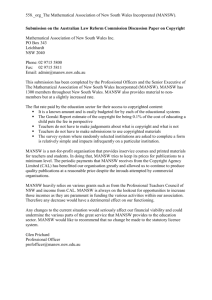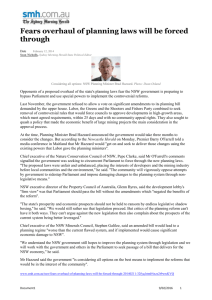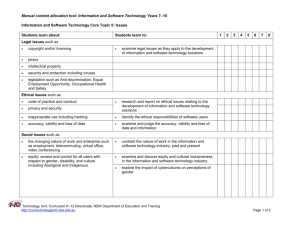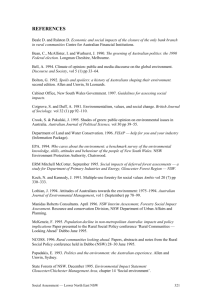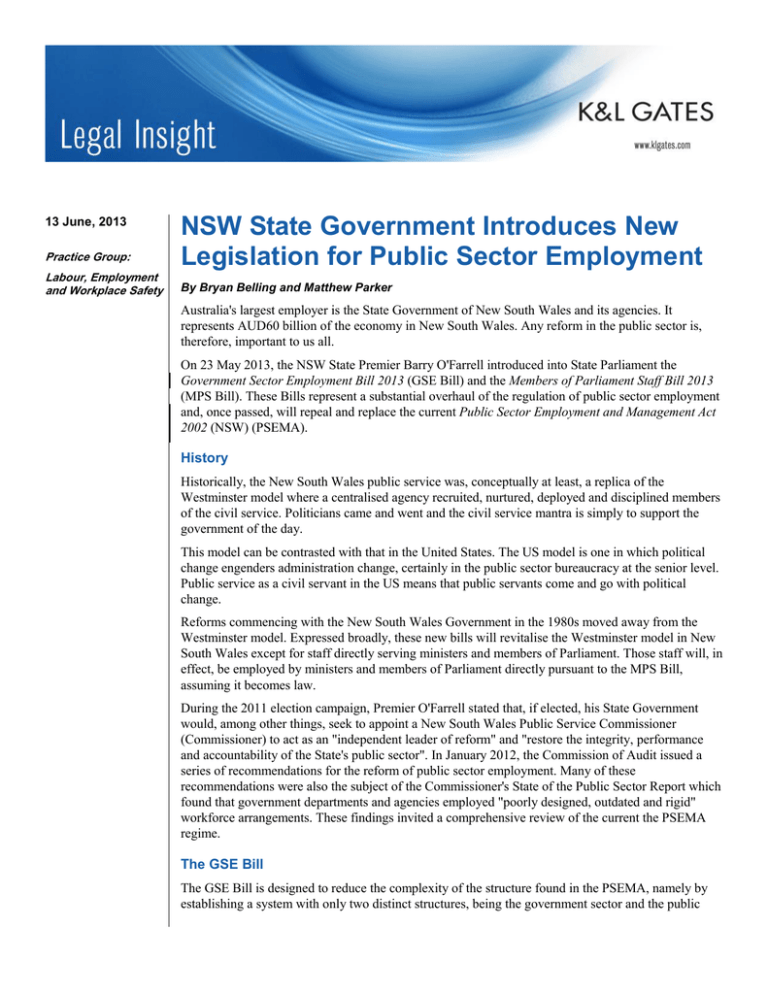
13 June, 2013
Practice Group:
Labour, Employment
and Workplace Safety
NSW State Government Introduces New
Legislation for Public Sector Employment
By Bryan Belling and Matthew Parker
Australia's largest employer is the State Government of New South Wales and its agencies. It
represents AUD60 billion of the economy in New South Wales. Any reform in the public sector is,
therefore, important to us all.
On 23 May 2013, the NSW State Premier Barry O'Farrell introduced into State Parliament the
Government Sector Employment Bill 2013 (GSE Bill) and the Members of Parliament Staff Bill 2013
(MPS Bill). These Bills represent a substantial overhaul of the regulation of public sector employment
and, once passed, will repeal and replace the current Public Sector Employment and Management Act
2002 (NSW) (PSEMA).
History
Historically, the New South Wales public service was, conceptually at least, a replica of the
Westminster model where a centralised agency recruited, nurtured, deployed and disciplined members
of the civil service. Politicians came and went and the civil service mantra is simply to support the
government of the day.
This model can be contrasted with that in the United States. The US model is one in which political
change engenders administration change, certainly in the public sector bureaucracy at the senior level.
Public service as a civil servant in the US means that public servants come and go with political
change.
Reforms commencing with the New South Wales Government in the 1980s moved away from the
Westminster model. Expressed broadly, these new bills will revitalise the Westminster model in New
South Wales except for staff directly serving ministers and members of Parliament. Those staff will, in
effect, be employed by ministers and members of Parliament directly pursuant to the MPS Bill,
assuming it becomes law.
During the 2011 election campaign, Premier O'Farrell stated that, if elected, his State Government
would, among other things, seek to appoint a New South Wales Public Service Commissioner
(Commissioner) to act as an "independent leader of reform" and "restore the integrity, performance
and accountability of the State's public sector". In January 2012, the Commission of Audit issued a
series of recommendations for the reform of public sector employment. Many of these
recommendations were also the subject of the Commissioner's State of the Public Sector Report which
found that government departments and agencies employed "poorly designed, outdated and rigid"
workforce arrangements. These findings invited a comprehensive review of the current the PSEMA
regime.
The GSE Bill
The GSE Bill is designed to reduce the complexity of the structure found in the PSEMA, namely by
establishing a system with only two distinct structures, being the government sector and the public
NSW State Government Introduces New Legislation for
Public Sector Employment
service, as opposed to the current system which consists of the government service, the public sector,
the public sector services and the public service.
The GSE Bill creates this new public service by combining the current government and public
services and consists of persons employed by the Government in the service of the Crown. All
employees, including senior executive employees, will be assigned a classification and role within a
particular agency, however, the flexibility of the GSE Bill will allow them to then be assigned to a
different role to satisfy the needs of a department or agency as required.
The new government sector will encompass the majority of New South Wales' Government
employees including:
the public service
the teaching service
the NSW Police Force
the NSW Health Service
any other service of the Crown.
A further reform will act to align the NSW Police Force Senior Executive Service, the Health
Executive Service and the Transport Senior Service. The new public service executive arrangements
will allow the senior executive structure to absorb the current Chief Executive Service, Senior
Executive Service and award based executive positions. Beyond the new arrangements concerning
award based executives, the GSE Bill will not affect current public sector industrial instruments.
Interestingly, the GSE Bill also provides for specific grounds for dismissal of non-executive
employees under section 47, a provision not contained in the PSEMA. These grounds include both
poor performance and misconduct, and create a more efficient process for the removal of public sector
employees who fail to competently perform their duties.
The GSE Bill removes the ability of public sector employees to appeal against promotions to the
Industrial Relations Commission in favour of stronger internal review mechanisms. This aspect of the
reform resonates with the role of the Public Service Board as it was prior to the changes commencing
in the early 1980s.
The MPS Bill
The proposed MPS Bill will apply to the employees of political office holders with office holders
being Ministers and the Leader of the Opposition in the Legislative Assembly, and employees that
assist members of State Parliament in their electoral and parliamentary duties.
The MPS Bill proposes that each member of State Parliament is to be the employer of his or her own
staff while the Parliamentary Remuneration Tribunal will continue to determine the number of staff
each member is able to employ. These arrangements are reflective of the structure currently in place in
the Commonwealth for employees of members of Federal Parliament.
2
NSW State Government Introduces New Legislation for
Public Sector Employment
Authors:
Bryan Belling
bryan.belling@klgates.com
+61.2.9513.2541
Matthew Parker
matthew.parker@klgates.com
+61.2.9513.2491
Anchorage Austin Beijing Berlin Boston Brisbane Brussels Charleston Charlotte Chicago Dallas Doha Dubai Fort Worth Frankfurt
Harrisburg Hong Kong Houston London Los Angeles Melbourne Miami Milan Moscow Newark New York Orange County Palo Alto Paris
Perth Pittsburgh Portland Raleigh Research Triangle Park San Diego San Francisco São Paulo Seattle Seoul Shanghai Singapore Spokane
Sydney Taipei Tokyo Warsaw Washington, D.C. Wilmington
K&L Gates practices out of 48 fully integrated offices located in the United States, Asia, Australia, Europe, the
Middle East and South America and represents leading global corporations, growth and middle-market companies,
capital markets participants and entrepreneurs in every major industry group as well as public sector entities,
educational institutions, philanthropic organizations and individuals. For more information about K&L Gates or its
locations, practices and registrations, visit www.klgates.com.
This publication is for informational purposes and does not contain or convey legal advice. The information herein should not be used or relied upon in
regard to any particular facts or circumstances without first consulting a lawyer.
3
NSW State Government Introduces New Legislation for
Public Sector Employment
©2013 K&L Gates LLP. All Rights Reserved.
4

